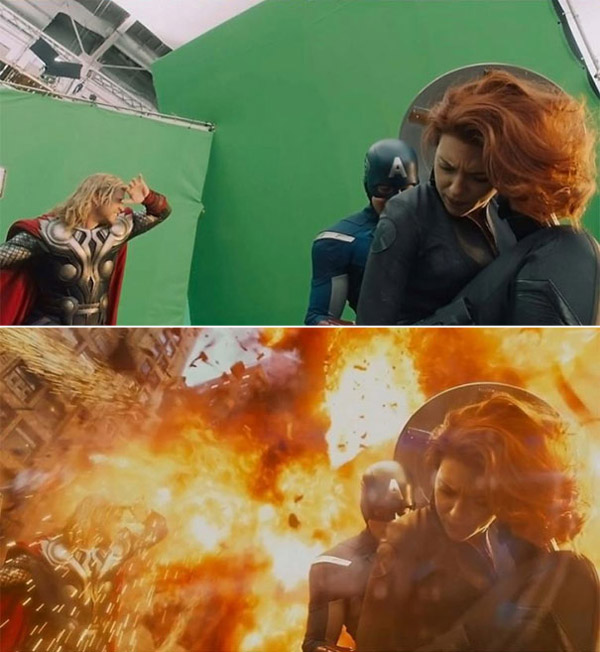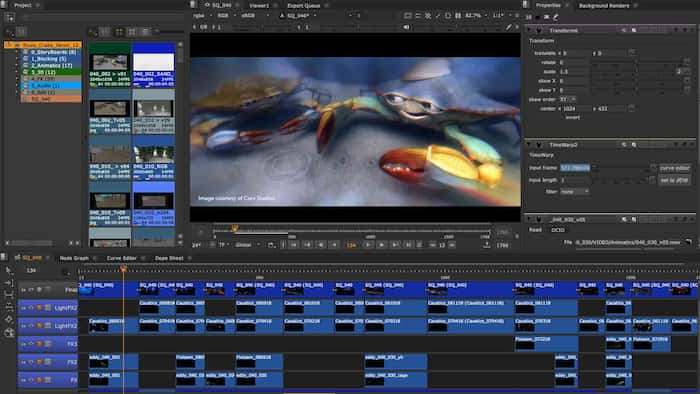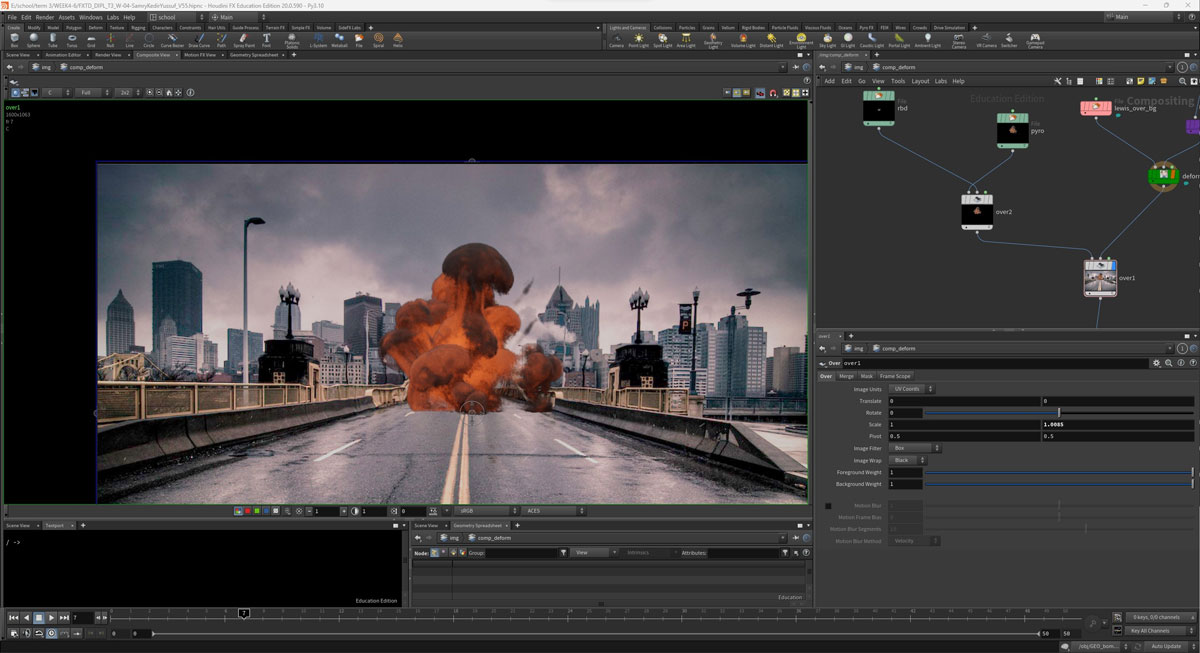What Does a Visual Effects Artist Actually Do?

A Visual Effects Artist is a master of digital illusion, responsible for creating, manipulating, and integrating computer-generated imagery (CGI) into live-action footage. Their work encompasses everything from subtle environmental enhancements to spectacular fantastical sequences that define modern cinema.
Compositing & Integration
Seamlessly blending multiple visual elements into cohesive, believable scenes
3D Modeling & Animation
Creating digital assets, characters, and environments from concept to completion
Simulation & Dynamics
Simulating realistic physics for fire, water, explosions, and natural phenomena
Matte Painting & Environments
Extending live-action sets with photorealistic digital backdrops and landscapes
Creating the Impossible: Bringing Imagination to Screen

Fantasy Worlds
Transforming green screen footage into magical, otherworldly environments that transport audiences beyond reality.

Epic Action Sequences
Creating spectacular superhero battles and impossible stunts that thrill audiences while keeping actors safe.

Seamless Integration
The art of making digital elements appear naturally embedded within live-action footage.
The Magic Behind the Screen
Every spectacular moment you see on screen—from dragons soaring through medieval skies to spaceships battling in distant galaxies—begins with a VFX artist's vision and technical expertise. They work closely with directors, cinematographers, and other creatives to ensure that every digital element serves the story's emotional truth.
The modern VFX artist must be part artist, part programmer, part physicist, and part storyteller. They understand light, shadow, and movement at both an artistic and mathematical level, creating imagery so convincing that audiences forget they're watching digital creations.
Behind the Magic: VFX Breakdowns & Artist Insights
How a 5-Person Team Made Oscar-Winning Effects
Discover how a small but talented team created the groundbreaking visual effects for "Everything Everywhere All at Once"
How Avatar's VFX Became So Realistic
Explore the revolutionary techniques used to create the photorealistic world of Pandora
Famous Movies Without Special Effects
See your favorite films before VFX magic was applied - a fascinating behind-the-scenes look at the raw footage
VFX Team Structure & Collaboration

The VFX Department Hierarchy
VFX Supervisor
Oversees the entire VFX process, collaborates with directors, and ensures creative vision alignment
Lead Compositor
Manages the compositing team and ensures seamless integration of all visual elements
3D Artist
Creates digital models, textures, and animations for characters and environments
Roto Artist
Handles rotoscoping and masking to isolate elements for compositing
FX Artist
Specializes in simulations: explosions, water, smoke, and other dynamic effects
Matte Painter
Creates digital backgrounds and environment extensions
Key Tools and Software in VFX

Nuke
Industry-standard compositing software for seamless integration of VFX elements
Maya
Comprehensive 3D modeling, animation, and rendering software for character and environment creation

Houdini
Powerful procedural 3D software for complex simulations and effects
After Effects
Motion graphics and compositing software, perfect for beginners and motion design
Blender
Free, open-source 3D creation suite with growing industry adoption
DaVinci Resolve
Professional editing and color grading with integrated Fusion compositing
Getting Started: Entry-Level Toolkit
Free Options for Beginners:
- Blender (Complete 3D suite)
- DaVinci Resolve (Editing + Fusion)
- Natron (Open-source compositing)
Professional Pathway:
- Start with After Effects
- Learn Nuke for compositing
- Master Maya/Houdini for 3D
Best Practices and VFX Workflow
Pre-Production Planning
Collaborate with directors and cinematographers to plan VFX shots, establish visual style, and create technical specifications
On-Set Data Collection
Gather reference materials, HDR imagery, camera tracking data, and lighting information during filming
Asset Creation
Build 3D models, create textures, develop animations, and prepare all digital elements needed for shots
Compositing & Integration
Combine all elements using sophisticated compositing techniques to create seamless, photorealistic final images
Review & Refinement
Iterate based on director feedback, fine-tune details, and ensure continuity across sequences
Interactive VFX Planning Worksheet
Scene Breakdown & VFX Planning Exercise
Step 1: Scene Analysis
Step 2: VFX Breakdown
Step 3: Technical Considerations
Camera Data Needed:
- • Focal length information
- • Camera movement tracking
- • Lighting setup details
- • Color temperature/white balance
On-Set Requirements:
- • Green screen setup
- • Reference objects/markers
- • HDR photography
- • Multiple camera angles
Post-Production Tools:
- • Compositing software
- • 3D modeling tools
- • Color grading suite
- • Render farm access
Career Path & Industry Insights
Skills Development Roadmap
Industry Specializations
Compositor
Integrating multiple elements
3D Artist
Modeling and animation
FX Artist
Simulations and dynamics
Matte Painter
Environment creation
Technical Director
Pipeline and tools
Resources & Next Steps
Learning Resources
Community & Forums
Your Journey Into VFX Begins Now
The world of visual effects is constantly evolving, offering endless opportunities for creative expression and technical innovation. Whether you're drawn to the artistry of matte painting, the precision of compositing, or the complexity of 3D animation, there's a place for your unique vision in this dynamic industry.
Start Creating
Begin with simple projects and gradually build complexity
Build Network
Connect with other artists and industry professionals
Never Stop Learning
Stay current with new technologies and techniques